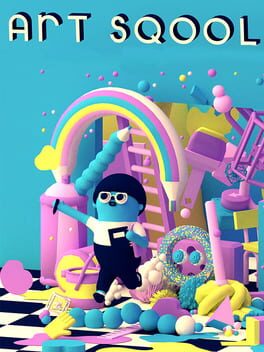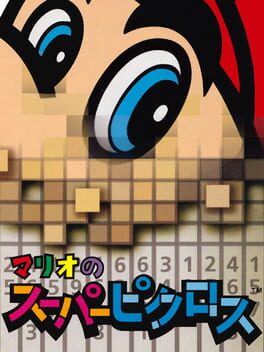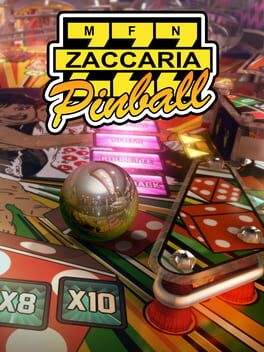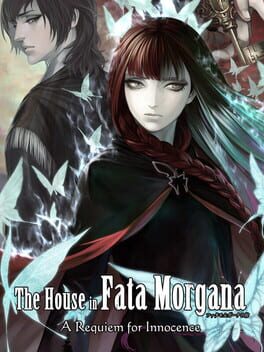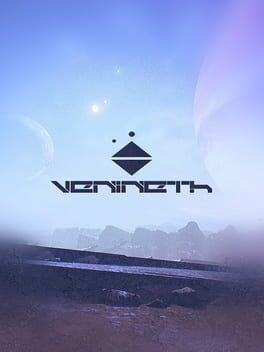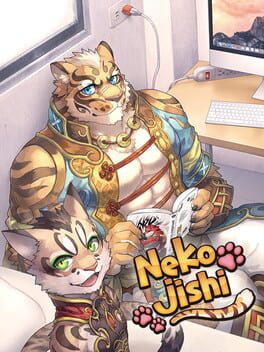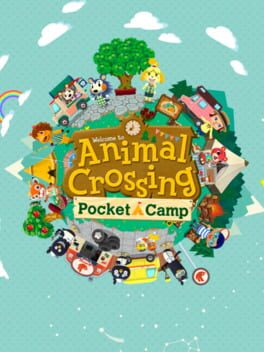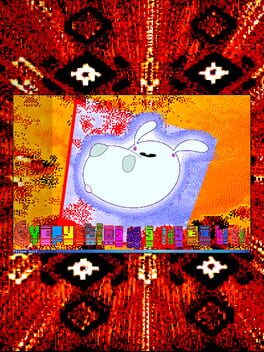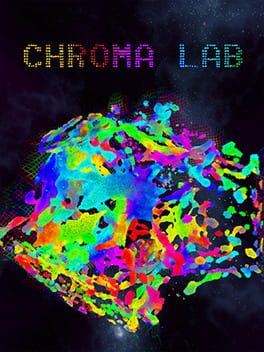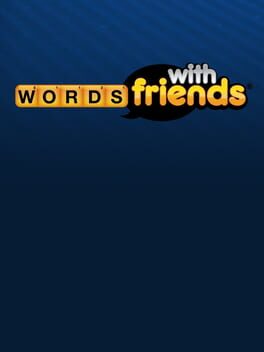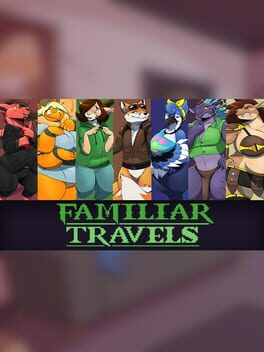NickShutter
2019
(Adjusted from a review written in 2019 Feb)
It's always nice to see Julian Glander's art on my social media feeds—it's charming, it looks great, and it's instantly recognizable and unique. I respect Glander a lot as an independent artist and content creator. I truly believe that artists like Glander keep art vibrant and alive in the Internet era, which is part of what makes writing this review so difficult. I generally don't like making heavy criticisms of these kinds of artists. But the monetization of one's work—which I wholeheartedly support—does, I feel, open creators up to a higher level of critique. ART SQOOL has Glander's signature aesthetic, the music is fairly great, and the humor is generally pretty good, but it falls short on gameplay—even approaching it as an experimental audiovisual experience.
It's unfortunate that an art game billing itself as having "assignments generated & graded by an A.I." actually has "assignments graded arbitrarily with no regard for what you've drawn." Don't buy this under the impression that some program is going to actually analyze your art, because that certainly isn't the case. And that's unfortunate, because I feel that the branding of the game—the selling point, in fact—conveys the opposite. Don't get me wrong, I wasn't under the impression that it was actually some super-advanced AI that was going to analyze my work. But I was hoping that my work would, y'know, have at least some impact on the scoring, but that's not the case here.
One could say that's an intentional dig at how academia tries to weigh subjective works on an objective scale, but there's nothing else to really suggest that's the case, so the interpretation seems generous. There was no real desire to actually carry out the prompts the game gave me once I realized that the "A.I." is actually just throwing out a random score. It's possible to see this when being handed a "D" or "F" grade—the professor sends you back out to campus to "try again," but a quick press of the undo button brings your old work back. This allows you to re-submit the same work for a potential passing grade. Sure, one could just do the prompts for one's own amusement, but they are often vague or difficult to the point of impossibility—usually as a joke. While the humor lands every once in a while, in time this just feels like a joke at the player's expense. "Here's a vague challenge, draw something random and hope the A.I. picks a good letter this time."
One must also traverse the campus to find and unlock the various tools and colors. This is neat at first, but the world quickly reveals itself as empty with no interactivity. I actually became disinterested in finding all of the artist tools, and ended the game missing two of them. Finishing the game requires the player to complete several prompts, and once that's done, the player is unceremoniously brought right to the menu screen. No "you graduated ART SQOOL" or "you beat the game!" Attempting to continue the save will drop the player back into the campus world, but with no sketch pad or prompts. Sorry, no post-game free-draw mode. This wasn't the only gameplay issue I had, either—footstep noises continue as one "walks" through the air, and occasionally the player may spawn without a pad to draw on.
There was the promise of something greater that was left unfulfilled in ART SQOOL—that, combined with some rough edges, on top of my rapidly deflated hype, really tore into me as the prompts continued. I really wanted this game to be one of those special little experiences, but ended up with a bit of buyer's remorse instead.
It's always nice to see Julian Glander's art on my social media feeds—it's charming, it looks great, and it's instantly recognizable and unique. I respect Glander a lot as an independent artist and content creator. I truly believe that artists like Glander keep art vibrant and alive in the Internet era, which is part of what makes writing this review so difficult. I generally don't like making heavy criticisms of these kinds of artists. But the monetization of one's work—which I wholeheartedly support—does, I feel, open creators up to a higher level of critique. ART SQOOL has Glander's signature aesthetic, the music is fairly great, and the humor is generally pretty good, but it falls short on gameplay—even approaching it as an experimental audiovisual experience.
It's unfortunate that an art game billing itself as having "assignments generated & graded by an A.I." actually has "assignments graded arbitrarily with no regard for what you've drawn." Don't buy this under the impression that some program is going to actually analyze your art, because that certainly isn't the case. And that's unfortunate, because I feel that the branding of the game—the selling point, in fact—conveys the opposite. Don't get me wrong, I wasn't under the impression that it was actually some super-advanced AI that was going to analyze my work. But I was hoping that my work would, y'know, have at least some impact on the scoring, but that's not the case here.
One could say that's an intentional dig at how academia tries to weigh subjective works on an objective scale, but there's nothing else to really suggest that's the case, so the interpretation seems generous. There was no real desire to actually carry out the prompts the game gave me once I realized that the "A.I." is actually just throwing out a random score. It's possible to see this when being handed a "D" or "F" grade—the professor sends you back out to campus to "try again," but a quick press of the undo button brings your old work back. This allows you to re-submit the same work for a potential passing grade. Sure, one could just do the prompts for one's own amusement, but they are often vague or difficult to the point of impossibility—usually as a joke. While the humor lands every once in a while, in time this just feels like a joke at the player's expense. "Here's a vague challenge, draw something random and hope the A.I. picks a good letter this time."
One must also traverse the campus to find and unlock the various tools and colors. This is neat at first, but the world quickly reveals itself as empty with no interactivity. I actually became disinterested in finding all of the artist tools, and ended the game missing two of them. Finishing the game requires the player to complete several prompts, and once that's done, the player is unceremoniously brought right to the menu screen. No "you graduated ART SQOOL" or "you beat the game!" Attempting to continue the save will drop the player back into the campus world, but with no sketch pad or prompts. Sorry, no post-game free-draw mode. This wasn't the only gameplay issue I had, either—footstep noises continue as one "walks" through the air, and occasionally the player may spawn without a pad to draw on.
There was the promise of something greater that was left unfulfilled in ART SQOOL—that, combined with some rough edges, on top of my rapidly deflated hype, really tore into me as the prompts continued. I really wanted this game to be one of those special little experiences, but ended up with a bit of buyer's remorse instead.
Mario's Super Picross is a nonogram game with Mario-themed menus, available through Nintendo Switch Online's service in its original Japanese locale. If you know how to solve nonograms, though, there's no language barrier—just a small cultural one on a few of the puzzles, perhaps. See, only the menus really have anything to do with Mario, and even then it almost has the same gunky bootleg-esque visuals as the edutainment Mario games that Interplay and The Software Toolworks were developing around that time. Once you're actually doing the puzzles, all of that Mario stuff falls away in favor of a brown, serious, rigid, and somewhat scholastic aesthetic. Even the music reflects the change, preferring an anxious "test-taking" kind of tune over the kind of upbeat and melodic stuff we associate with our silly plumber friend. The puzzles themselves are fine, as it's hard to really screw up nonograms, but it's a shame just how limited the theming really is here.
It's also missing a lot of the modern quality of life conveniences that come with more recent games in Jupiter's Picross series: you won't find advanced technique tutorials, count assistance, or the ability to mark spaces with circles—just crosses. Because of that, and also because players will need to know some tricks in later levels that the game doesn't outright teach, I wouldn't recommend this as someone's first Picross game (despite the puzzles appearing to skew to the easier side overall). Still, there's really nothing wrong with this one, and I'd recommend it to fans of the series who haven't picked it up yet—provided they aren't too married to the sleek Y2K aesthetic of Jupiter's recent output.
It's also missing a lot of the modern quality of life conveniences that come with more recent games in Jupiter's Picross series: you won't find advanced technique tutorials, count assistance, or the ability to mark spaces with circles—just crosses. Because of that, and also because players will need to know some tricks in later levels that the game doesn't outright teach, I wouldn't recommend this as someone's first Picross game (despite the puzzles appearing to skew to the easier side overall). Still, there's really nothing wrong with this one, and I'd recommend it to fans of the series who haven't picked it up yet—provided they aren't too married to the sleek Y2K aesthetic of Jupiter's recent output.
2020
Mighty Coconut's Walkabout Mini Golf is VR mini golf done right. There's a good selection of courses providing a nice variety of themes to choose from, ranging from pleasant mountains to outer space. They can be played during day or night—an option that doubles as the course's difficulty setting. Each hole has a golf ball hidden in its surrounding scenery, and each one the player finds unlocks a new color scheme for their own golf ball. Some of these are simple colors and patterns, but some have simple images on them, and many of them are country and pride flags. The cel shaded graphical style gives the game a simple, but very clean and colorful look. It's a style that tends to age quite gracefully in the games that employ it, so while its graphics might not blow away VR enthusiasts, it's sure to look fresh for years to come.
There's a level of attention and care in Walkabout Mini Golf that makes it stand out from other VR games at its price point. Namely, the physics feel "right" and are easy to get the hang of. There's a button that teleports you to your golf ball, but also free movement—including a flight mode. If your ball is moving through a tunnel or something similar, the teleport button will conveniently bring you to where your ball will exit, instead of getting you trapped in scenery. One of the game's best small-but-great features is that the golf club automatically adjusts to the height of the player wielding it, extending or retracting to the perfect length when readied. There are a lot of ways in which Walkabout Mini Golf could have become frustrating or unwieldy, but they all seem to have been accounted for. Anyone looking for a fun, smooth VR mini golf experience for up to five players should start here.
There's a level of attention and care in Walkabout Mini Golf that makes it stand out from other VR games at its price point. Namely, the physics feel "right" and are easy to get the hang of. There's a button that teleports you to your golf ball, but also free movement—including a flight mode. If your ball is moving through a tunnel or something similar, the teleport button will conveniently bring you to where your ball will exit, instead of getting you trapped in scenery. One of the game's best small-but-great features is that the golf club automatically adjusts to the height of the player wielding it, extending or retracting to the perfect length when readied. There are a lot of ways in which Walkabout Mini Golf could have become frustrating or unwieldy, but they all seem to have been accounted for. Anyone looking for a fun, smooth VR mini golf experience for up to five players should start here.
2013
Zaccaria Pinball is a game focused on emulating the tables of the Italian pinball company Zaccaria, with an emphasis on strong physics simulation. Zaccaria produced pinball tables from 1974 to 1987, and was one of the most successful manufacturers of its time. The pinball tables they engineered were made to the standards of their time—while they can be fun to play, the strength of their layouts and gameplay styles vary greatly, and they lack the design sensibilities of modern tables. For example, many of the older tables have greedy outlanes or a large amount of space between the flippers, which can easily cause balls to sink instantly without player error. Combine that with the fact that starting with a ball saver didn't become common until the '90s, and you have a lot of wasted quarters. To give another, but somewhat different example, old people sure did love to slap Native American stereotypes on everything and call it a "theme." All of that, minus the quarters, carries over into Zaccaria Pinball. Magic Pixel's newly-designed tables, many of which are Zaccaria tables reimagined to be from different eras, also tend to follow these design principles. The result is that we have cool and accurate digital representations of these real tables, preserved in our computers so their legacies can live on. When it comes to playing these classics, however, we end up with a few great and fun tables, a few too many godawful tables, and a good majority that are decent, if dated. To be fair, however, there's a whole section dedicated to modernized versions of classic tables, and these tend to be the most fun for me. Many of them are designed extremely well, and feel great to play.
As far as the program's actual features go, Magic Pixel does a pretty solid job. The ball simulation is fantastic, especially on simulation mode—the other main option being arcade mode, which makes the ball a bit slower and more "video gamey." While the menu and UI leaves a lot to be desired, the actual tables look great and there are a lot of settings players can adjust to their liking, including lighting, reflections, glass visibility, weather conditions outside the window, and more. Speaking of weather conditions, players can change the environment surrounding the table itself. The room can be spruced up with decorations, but they're not particularly appealing—yes, you must have an ugly statue on your ugly console table. It's all very '70s and '80s, which I assume is meant to match the time period of the tables, but it feels like a wasted opportunity. It's all well-made, and looks great in VR (which is a stupid DLC purchase), but the option to have more modern surroundings would have been nice as well. Audio depends largely on the table. Bumpers and slingshots and whatnot tend to sound great and punchy, though by this point I've just turned the announcer voice off due to how incessant and annoying they can be.
Ultimately, it's worth checking out. The program itself is free, the physics are great, it comes with a few tables, and players can always buy more if they feel like the DLC is worth the price. Just be aware that when buying packs, there may be just a few stand-out tables.
As far as the program's actual features go, Magic Pixel does a pretty solid job. The ball simulation is fantastic, especially on simulation mode—the other main option being arcade mode, which makes the ball a bit slower and more "video gamey." While the menu and UI leaves a lot to be desired, the actual tables look great and there are a lot of settings players can adjust to their liking, including lighting, reflections, glass visibility, weather conditions outside the window, and more. Speaking of weather conditions, players can change the environment surrounding the table itself. The room can be spruced up with decorations, but they're not particularly appealing—yes, you must have an ugly statue on your ugly console table. It's all very '70s and '80s, which I assume is meant to match the time period of the tables, but it feels like a wasted opportunity. It's all well-made, and looks great in VR (which is a stupid DLC purchase), but the option to have more modern surroundings would have been nice as well. Audio depends largely on the table. Bumpers and slingshots and whatnot tend to sound great and punchy, though by this point I've just turned the announcer voice off due to how incessant and annoying they can be.
Ultimately, it's worth checking out. The program itself is free, the physics are great, it comes with a few tables, and players can always buy more if they feel like the DLC is worth the price. Just be aware that when buying packs, there may be just a few stand-out tables.
This review contains spoilers
[Actually played via Limited Run's The House in Fata Morgana: Dreams of the Revenants Edition on the Nintendo Switch]
The House in Fata Morgana: A Requiem for Innocence is a prequel to The House in Fata Morgana, the bulk of which expands upon the story of the Jacopo of Morgana's time. Much like the visual novel its based on, it starts off at a somewhat glacial pace. Unlike its progenitor, however, patience failed to reward me—despite generally positive fan reception. In the few moments that it manages to capture what made the first visual novel special, the depicted events still tend to feel like unnecessary extensions. At worst, they feel like desecration. Its best moments depict the moments following Jacopo's execution of the vile Lord Barnier, after which he descends into madness as he transforms into what he once despised. His slip mirrors that of the later Jacopo's, and much like then, it feels like a natural path for someone such as him to take—with a fitting conclusion, to boot.
Where the prequel stumbles hardest, however, is its waffling regarding whether or not it wants to frame Jacopo and Morgana's relationship as something that "could have been." In The House in Fata Morgana, both Jacopos' relationships with younger women were framed as something that unfortunately historically tended to happen—and as malicious. The tragedy in the tale of the second Jacopo is not just his mistreatment of Michelle and the failure of their relationship, but also includes the rest of the time they spent together. From the moment they first met, Jacopo utilizes the power imbalance between Michelle and himself for his benefit, leading her down a path she can't escape from. Jacopo's presence is the source of tragedy—whether it be the one in Morgana's time or the one that came after. A Requiem for Innocence loses sight of this in a pretty bad way, and there are moments where it seems that the author wants to impress upon the reader that they should want Jacopo and Morgana's relationship to "work"—as if it weren't a doomed idea from the start. For example, when tasked with presenting one of the characters with a flower, picking Jacopo's long-time friend Maria will result in her offhandedly scolding Jacopo (and the player, in a bit of fourth wall leaning) for not picking Morgana (or even Ceren, another underage character and a somewhat unwelcome presence). It's a very odd moment for a character who was less than thrilled with Jacopo's fawning over Morgana earlier in the story. In the end, Jacopo does get his comeuppance for the horrible deeds he commits in the latter half of the visual novel, but the scene in which his and Morgana's souls meet once more feels like a narrative misfire. Despite her still harboring a hatred of what he's done to her, the visual novel frames this scene looking back on their relationship as something bittersweet, something that could have been "done right" if Jacopo simply hadn't forgotten what was most important to him. As if a relationship in which a man just had to wait until the child he liked was 16 in order to tell her his real feelings could have been anything but a tragedy from the very beginning. In The House in Fata Morgana, the horror of this is clear. In A Requiem for Innocence, the author is not so certain, and it very much soured for me what already felt like an unneeded addition to the finely crafted, if somewhat flawed, story of the original.
A Requiem for Innocence also includes two other short stories. One is a short epilogue to the original visual novel that follows the modern day Michel and Giselle on a date. It's nice to see the two happy, it's cool to see them bump into the modern day equivalents of other members of the cast, and it's cute enough to justify its existence. It's fluff that lacks the gothic flair that made The House in Fata Morgana stick with me so strongly, but as with most fluff, it's harmless and optional. The second short story follows Imeon, a sick man who ends up on ye olde times Michel's doorstep that wants to speak with the witch rumored to live in the mansion. Michel putting up with Imeon as he overstays his welcome is entertaining enough, and the twist near the end feels fitting for the tragic world of Fata Morgana. These short stories were the definite highlight of A Requiem for Innocence to me, and felt worth reading even if not terribly substantial.
The House in Fata Morgana: A Requiem for Innocence is a prequel to The House in Fata Morgana, the bulk of which expands upon the story of the Jacopo of Morgana's time. Much like the visual novel its based on, it starts off at a somewhat glacial pace. Unlike its progenitor, however, patience failed to reward me—despite generally positive fan reception. In the few moments that it manages to capture what made the first visual novel special, the depicted events still tend to feel like unnecessary extensions. At worst, they feel like desecration. Its best moments depict the moments following Jacopo's execution of the vile Lord Barnier, after which he descends into madness as he transforms into what he once despised. His slip mirrors that of the later Jacopo's, and much like then, it feels like a natural path for someone such as him to take—with a fitting conclusion, to boot.
Where the prequel stumbles hardest, however, is its waffling regarding whether or not it wants to frame Jacopo and Morgana's relationship as something that "could have been." In The House in Fata Morgana, both Jacopos' relationships with younger women were framed as something that unfortunately historically tended to happen—and as malicious. The tragedy in the tale of the second Jacopo is not just his mistreatment of Michelle and the failure of their relationship, but also includes the rest of the time they spent together. From the moment they first met, Jacopo utilizes the power imbalance between Michelle and himself for his benefit, leading her down a path she can't escape from. Jacopo's presence is the source of tragedy—whether it be the one in Morgana's time or the one that came after. A Requiem for Innocence loses sight of this in a pretty bad way, and there are moments where it seems that the author wants to impress upon the reader that they should want Jacopo and Morgana's relationship to "work"—as if it weren't a doomed idea from the start. For example, when tasked with presenting one of the characters with a flower, picking Jacopo's long-time friend Maria will result in her offhandedly scolding Jacopo (and the player, in a bit of fourth wall leaning) for not picking Morgana (or even Ceren, another underage character and a somewhat unwelcome presence). It's a very odd moment for a character who was less than thrilled with Jacopo's fawning over Morgana earlier in the story. In the end, Jacopo does get his comeuppance for the horrible deeds he commits in the latter half of the visual novel, but the scene in which his and Morgana's souls meet once more feels like a narrative misfire. Despite her still harboring a hatred of what he's done to her, the visual novel frames this scene looking back on their relationship as something bittersweet, something that could have been "done right" if Jacopo simply hadn't forgotten what was most important to him. As if a relationship in which a man just had to wait until the child he liked was 16 in order to tell her his real feelings could have been anything but a tragedy from the very beginning. In The House in Fata Morgana, the horror of this is clear. In A Requiem for Innocence, the author is not so certain, and it very much soured for me what already felt like an unneeded addition to the finely crafted, if somewhat flawed, story of the original.
A Requiem for Innocence also includes two other short stories. One is a short epilogue to the original visual novel that follows the modern day Michel and Giselle on a date. It's nice to see the two happy, it's cool to see them bump into the modern day equivalents of other members of the cast, and it's cute enough to justify its existence. It's fluff that lacks the gothic flair that made The House in Fata Morgana stick with me so strongly, but as with most fluff, it's harmless and optional. The second short story follows Imeon, a sick man who ends up on ye olde times Michel's doorstep that wants to speak with the witch rumored to live in the mansion. Michel putting up with Imeon as he overstays his welcome is entertaining enough, and the twist near the end feels fitting for the tragic world of Fata Morgana. These short stories were the definite highlight of A Requiem for Innocence to me, and felt worth reading even if not terribly substantial.
2019
I had high hopes for this game when I bought the Founder's pack a long time ago, when there was only one mountain. The game was free to play back then, and the Founder's pack was $50. I felt like chipping in for something I thought had a lot of potential. And potential it did have—exploring the wide open mountain was neat, the physics worked, people who bought the Founder's pack had special gear, and snowmobiles were supposedly in the works.
Over time, though, I saw the game start to degrade. The physics got worse and worse, controls became increasingly stubborn, and when online rolled out it was a buggy, laggy mess. Soon after, microtransactions started and the mountain I enjoyed exploring got locked under a paywall. I didn't have access to it even though I bought the damn Founder's pack! That's when I gave up on the game entirely, uninstalling it without looking back.
Apparently, the game never recovered. Multiplayer servers were removed. Support for VR mode, which was by all accounts pretty solid, was also removed. The game is $15 now and worse than it was when it was free. Poppermost built a really great foundation for what could have been the next best winter sports game, but unable to live up to their promises, ultimately destroyed it.
Over time, though, I saw the game start to degrade. The physics got worse and worse, controls became increasingly stubborn, and when online rolled out it was a buggy, laggy mess. Soon after, microtransactions started and the mountain I enjoyed exploring got locked under a paywall. I didn't have access to it even though I bought the damn Founder's pack! That's when I gave up on the game entirely, uninstalling it without looking back.
Apparently, the game never recovered. Multiplayer servers were removed. Support for VR mode, which was by all accounts pretty solid, was also removed. The game is $15 now and worse than it was when it was free. Poppermost built a really great foundation for what could have been the next best winter sports game, but unable to live up to their promises, ultimately destroyed it.
2020
Venineth impresses right off the bat with its art direction, graphical fidelity, sound design, ultra-responsive controls, and level designs that vary from open and puzzle-filled to linear and platformer-oriented. Unlike the marble players control, however, the game has some issues with keeping the momentum going. After breaking down the first barrier in the hub world, players unlock the second set of levels. These are quite large, and don't convey a sense of direction to players as well as the first levels, which makes them easier to get lost in. As a result, they tend to overstay their welcome, and sticking to my goal of finishing just one level a day became laborious. By the time I decided to stop playing Venineth, I was finishing levels that only about 15% of players completed—and I was less than halfway through the game. Worth looking into for patient folks seeking a more "serious" rolling platformer, but I found it hard to stick with.
2017
Nekojishi is a simple wish fulfillment fantasy visual novel with decent art, and it starts off passably enough—an excuse plot allows a gay college student to interact with a few hunky furry gods, and antics ensue as the three vie for the guy's favor. Its writing in the English translation is okay-ish, but characterization is pretty flat and dull, especially with the featureless cardboard cutout main character, which makes the VN drag quite a bit in the middle. By the time drama in the final acts raises the stakes, it's hard to take seriously. Near the ending, the VN demolished any good will I had left for it when it throws in a pornographic sexual assault scene that plays into the shitty "it's not rape if you enjoy it" trope. Still gets a full 1.0, because hey—at least it's not Morenatsu.
Mainline Animal Crossing games tend do a very good job of taking several disparate gameplay mechanics and using them to create a cohesive, alive world for players to engage in. Wildlife can be captured and sold for Bells, used as decoration, traded with villagers, donated to a museum that tracks and shows off a player's progress. Fruit can also be sold, or asked for by villagers as a favor. Trees can be cultivated, shaken to receive rewards, and used to spruce (haha) up the village. While players are able to grind any of these gameplay elements, part of what makes Animal Crossing so immersive is its spontaneity—the moment-to-moment choices players make based on what's immediately in front of them. A player catches a fish because there happened to be one in the river that moment, or they go on a fruit hunt because one of their villagers got hungry suddenly. One of the series's most notable assets is its laid-back attitude, lack of significant deadlines, and its encouragement of players to play at their own pace.
Animal Crossing: Pocket Camp trades all of this in for time-sensitive events and disconnected mechanics that only serve the game's primary goal: for players to collect as much furniture as possible to decorate their camp with, for showing off to other players. The game presses limited edition clothing and furniture from special events pretty hard, which can be bought with Leaf Tickets—the game's premium currency—or earned in the form of grinding a watered-down version of fishing, gardening, or bug catching. Obtaining a full set of limited edition furniture by grinding is possible, but the steep prices are clearly meant to encourage players to purchase Leaf Tickets with real money—which Nintendo desperately, desperately wants. Special events are always happening, and there never seems to be a shortage of hot new furniture that you've gotta save up for. In-game notifications will never let you miss a single special occasion, and NPCs will always be sure to remind you of all the neat goings-on. Of course, all of this is optional. A player could entirely decide to avoid the ever-present special events and just play the game. But what's the game without these events? If players don't want the limited edition furniture, there's practically no reason to play, because Pocket Camp's gameplay mechanics only serve the purpose of keeping players hooked on a never-ending stream of time-based goals, in hope that its players eventually discover the futility of trying to collect rare sets through grinding-based means and purchase premium currency. Pocket Camp defies the spirit of Animal Crossing by instilling in players the exact opposite feeling as the core games of the series. The game fails to present its players with a relaxed escapist fantasy, instead offering players constant deadlines to meet with no time in-between for breathers. Players are always in a hurry to reach these goals, and if they aren't making the deadlines, they aren't playing the game.
Despite the inescapable presence of horrid microtransactions and gameplay that's structured entirely around them, the things Pocket Camp got right are worth mentioning. A lot of the furniture is incredibly interactive, making campsites and cabins feel truly alive and lived-in when villagers are enjoying their stuff. Villagers have little unlockable scenes that hint at them having a bit more personality than in the mainline games, which have villagers stuck in very limited personality groups (this almost makes up for the soulless acquisition method used to get these villagers into your camp in the first place). The constant events mean a constant stream of new furniture and clothing—though I just condemned the game for churning this stuff out too quickly and taking advantage of people's FOMO, the stuff itself is really good. As a side-note, it's quite funny that furniture interactivity and character liveliness are the things that Pocket Camp nailed, given the next mainline game, New Horizons, would flub these very same elements.
Animal Crossing: Pocket Camp trades all of this in for time-sensitive events and disconnected mechanics that only serve the game's primary goal: for players to collect as much furniture as possible to decorate their camp with, for showing off to other players. The game presses limited edition clothing and furniture from special events pretty hard, which can be bought with Leaf Tickets—the game's premium currency—or earned in the form of grinding a watered-down version of fishing, gardening, or bug catching. Obtaining a full set of limited edition furniture by grinding is possible, but the steep prices are clearly meant to encourage players to purchase Leaf Tickets with real money—which Nintendo desperately, desperately wants. Special events are always happening, and there never seems to be a shortage of hot new furniture that you've gotta save up for. In-game notifications will never let you miss a single special occasion, and NPCs will always be sure to remind you of all the neat goings-on. Of course, all of this is optional. A player could entirely decide to avoid the ever-present special events and just play the game. But what's the game without these events? If players don't want the limited edition furniture, there's practically no reason to play, because Pocket Camp's gameplay mechanics only serve the purpose of keeping players hooked on a never-ending stream of time-based goals, in hope that its players eventually discover the futility of trying to collect rare sets through grinding-based means and purchase premium currency. Pocket Camp defies the spirit of Animal Crossing by instilling in players the exact opposite feeling as the core games of the series. The game fails to present its players with a relaxed escapist fantasy, instead offering players constant deadlines to meet with no time in-between for breathers. Players are always in a hurry to reach these goals, and if they aren't making the deadlines, they aren't playing the game.
Despite the inescapable presence of horrid microtransactions and gameplay that's structured entirely around them, the things Pocket Camp got right are worth mentioning. A lot of the furniture is incredibly interactive, making campsites and cabins feel truly alive and lived-in when villagers are enjoying their stuff. Villagers have little unlockable scenes that hint at them having a bit more personality than in the mainline games, which have villagers stuck in very limited personality groups (this almost makes up for the soulless acquisition method used to get these villagers into your camp in the first place). The constant events mean a constant stream of new furniture and clothing—though I just condemned the game for churning this stuff out too quickly and taking advantage of people's FOMO, the stuff itself is really good. As a side-note, it's quite funny that furniture interactivity and character liveliness are the things that Pocket Camp nailed, given the next mainline game, New Horizons, would flub these very same elements.
This review contains spoilers
[Written in 2018]
Nathalie Lawhead's EVERYTHING IS GOING TO BE OK is a video game art piece taking the form of an operating system full of "programs" with various levels of interactivity. The point of the game is to simply take in whatever fairly strange and abstract experience each of these programs have to offer, usually featuring amorphous bunny-like creatures with high-pitched voices and a penchant for soul-crushing pessimism. Occasionally one of these programs will partly offer an unexpected form of media, such as poetry.
Like with many art games, different people are going to take away different experiences, and those experiences are arguably prone to a higher level of subjectivity than with other styles of games. Explaining EVERYTHING IS GOING TO BE OK to someone who hasn’t played it before isn’t terribly helpful, and having that experience for oneself is a fairly important contextual piece when dealing with other people’s own personal experiences with the game. EVERYTHING IS GOING TO BE OK’s polarizing aesthetic choices and the way it handles its difficult and serious themes is going to draw a different reaction depending on who views it, making it difficult to praise the individual elements of the game as being "good." That said, as a person with some level of insight and experience, I can tell why I think the presentation of this game is the way it is, and why it’s not necessarily "bad." That makes this less of a "review" of the game, and more of a "defense." While most of the comments I've seen are in praise of the art piece, there are a few dissenters and this is largely a response. If you haven’t played EVERYTHING IS GOING TO BE OK yet, and your curiosity has been piqued, now’s the time to stop reading this and spend a good twenty-to-thirty minutes checking it out.
The primary topic holding these programs together is mental illness, with themes of anxiety and depression drenching EVERYTHING IS GOING TO BE OK to an extreme degree. These themes aren't approached with any level of subtlety, either – references to mental illness are incredibly on-the-nose and constant. The player is barraged by high-pitched bunnies mentioning their loss of hope and the will to live, social anxiety, and feelings of worthlessness. This is related to the most persistent criticism of the game – the one I personally wish to defend against the most. Many people have expressed that the thematic content of the game is poorly handled. Its lack of subtlety in regards to topics regarding mental illness, the endless repetition of depression and anxiety-related dialogue, and it’s very overt imagery have garnered it some flak. Some find it disrespectful and mocking towards those with illnesses, others think it’s annoying or edgy, and some people are in both boats. However, I think people who are viewing it in that way might be missing the point. Mental illness has the ability to take over one’s life in a very pervasive way, often destroying relationships and introducing a constant stream of thoughts of despair and self-loathing. For those with anxiety and depression, their condition can become overbearing and affect every aspect of their lives. For those who are dealing with the most extreme end of mental illnesses, these thoughts can dominate their lives. There is nothing subtle about mental illness. This is how it is. Once this has been realized, the game’s detractors become part of the point. Are the ones who deride this game for not being subtle enough the same type of people who are naïve enough to ask those with illness to be more subtle about it? To just "cheer up" or "be quiet"? To just "drink some water" or "get some fresh air"? While I can’t give any hard evidence to support that detractors of the game are completely ignorant about how mental illness works, a quick glance through the comments on videos related to the art piece show that many mentally ill folks find the game intensely relatable. People with mental illnesses seem to show a tendency for praising the game for its brashness and accuracy, which means many of the criticisms are likely coming from those who aren’t intimately familiar with the subject matter at hand. Like it or not, Nathalie Lawhead has created an accurate depiction of what it is like to suffer a cocktail of mental conditions that often go hand in hand. Regardless of whether or not she’s an individual with mental illness, regardless of whether or not this is a vent piece, regardless of whether or not any of this was intended, that much is true.
While I would normally want to discuss the visual and sound design of a game before getting into the nitty-gritty thematic details, I think it’s important to establish the latter first in this case because I feel like the aesthetic is heavily dependent on the theme. Visually, the game falls into the "post-Internet Microsoft Paint" and "eye-strain" aesthetics, featuring heavily posterized and clashing colors, simply-drawn designs mixed with clip art and compressed videos, and flashing apocalyptic imagery. The game’s very intense visuals, the loud and compressed sound effects, and the high-pitched and repetitive dialogue help contribute to the ever-punishing nature of the game. Regardless of how you feel about the way it looks and sounds, it’s going to capture your attention immediately while demanding you to stay. It’s a game that refuses to be ignored. These elements of the game are a reflection of its themes. Attention-grabbing, repetitive, anxiety-inducing, and exhausting, the presentation of the game strives to become the true essence of its themes. Its success in this regard is going to be contingent largely on one’s familiarity with the theme at hand, but that’s not to say that one has to be mentally ill in order to come away with a positive experience.
At this point I’ve gone over the most important elements that I’ve wanted to cover, but before I end this analysis I want to draw attention to the most persistent trait of the game: the use of depressed bunny-like blob creatures as the focus of attention, and their failure to defeat their negative emotions. Images of a suicidal bunnies with piercing voices getting severely injured or dying might bring to mind childish Newgrounds animations, or perhaps one might think that’s something a person who shops exclusively at Hot Topic would find funny. However, I would not be surprised if the cute characters of EVERYTHING IS GOING TO BE OK are meant to represent the facade of normality and happiness that people with mental illness are pressured into adopting. Bunnies are cute, and are associated with comfort and warmth. Comfort and warmth are associated with happiness and contentment. The bunnies of EVERYTHING IS GOING TO BE OK often lie about or hide their negative feelings from others while pretending to be happy or optimistic about the future. Their cute form is a literalization of the mask they’ve put on for others, and the lie they tell themselves and others is right there in the title of the game.
I walked away from EVERYTHING IS GOING TO BE OK thinking. I couldn’t get it out of my head. The more I thought about the game, the more I wanted to write about the conclusions I had made. Whether one appreciates it or not, my hope is that the game at least gets every player that walks away from it to do that much. I feel that passing off the game as shallow is criminally underestimating it even just as an audiovisual experience, and I think it’s important that others write about their own feelings and interpretations of what they believe the game has or has not accomplished. I don’t think that what I’ve written here is definite. This is simply the impression I was left with after I was finished. While others may feel similarly, I would hope that they have other points to contribute. If you, like me, are bad at following instructions and have read this far without actually playing the game, I highly recommend EVERYTHING IS GOING TO BE OK for those who have the energy to go through it.
Nathalie Lawhead's EVERYTHING IS GOING TO BE OK is a video game art piece taking the form of an operating system full of "programs" with various levels of interactivity. The point of the game is to simply take in whatever fairly strange and abstract experience each of these programs have to offer, usually featuring amorphous bunny-like creatures with high-pitched voices and a penchant for soul-crushing pessimism. Occasionally one of these programs will partly offer an unexpected form of media, such as poetry.
Like with many art games, different people are going to take away different experiences, and those experiences are arguably prone to a higher level of subjectivity than with other styles of games. Explaining EVERYTHING IS GOING TO BE OK to someone who hasn’t played it before isn’t terribly helpful, and having that experience for oneself is a fairly important contextual piece when dealing with other people’s own personal experiences with the game. EVERYTHING IS GOING TO BE OK’s polarizing aesthetic choices and the way it handles its difficult and serious themes is going to draw a different reaction depending on who views it, making it difficult to praise the individual elements of the game as being "good." That said, as a person with some level of insight and experience, I can tell why I think the presentation of this game is the way it is, and why it’s not necessarily "bad." That makes this less of a "review" of the game, and more of a "defense." While most of the comments I've seen are in praise of the art piece, there are a few dissenters and this is largely a response. If you haven’t played EVERYTHING IS GOING TO BE OK yet, and your curiosity has been piqued, now’s the time to stop reading this and spend a good twenty-to-thirty minutes checking it out.
The primary topic holding these programs together is mental illness, with themes of anxiety and depression drenching EVERYTHING IS GOING TO BE OK to an extreme degree. These themes aren't approached with any level of subtlety, either – references to mental illness are incredibly on-the-nose and constant. The player is barraged by high-pitched bunnies mentioning their loss of hope and the will to live, social anxiety, and feelings of worthlessness. This is related to the most persistent criticism of the game – the one I personally wish to defend against the most. Many people have expressed that the thematic content of the game is poorly handled. Its lack of subtlety in regards to topics regarding mental illness, the endless repetition of depression and anxiety-related dialogue, and it’s very overt imagery have garnered it some flak. Some find it disrespectful and mocking towards those with illnesses, others think it’s annoying or edgy, and some people are in both boats. However, I think people who are viewing it in that way might be missing the point. Mental illness has the ability to take over one’s life in a very pervasive way, often destroying relationships and introducing a constant stream of thoughts of despair and self-loathing. For those with anxiety and depression, their condition can become overbearing and affect every aspect of their lives. For those who are dealing with the most extreme end of mental illnesses, these thoughts can dominate their lives. There is nothing subtle about mental illness. This is how it is. Once this has been realized, the game’s detractors become part of the point. Are the ones who deride this game for not being subtle enough the same type of people who are naïve enough to ask those with illness to be more subtle about it? To just "cheer up" or "be quiet"? To just "drink some water" or "get some fresh air"? While I can’t give any hard evidence to support that detractors of the game are completely ignorant about how mental illness works, a quick glance through the comments on videos related to the art piece show that many mentally ill folks find the game intensely relatable. People with mental illnesses seem to show a tendency for praising the game for its brashness and accuracy, which means many of the criticisms are likely coming from those who aren’t intimately familiar with the subject matter at hand. Like it or not, Nathalie Lawhead has created an accurate depiction of what it is like to suffer a cocktail of mental conditions that often go hand in hand. Regardless of whether or not she’s an individual with mental illness, regardless of whether or not this is a vent piece, regardless of whether or not any of this was intended, that much is true.
While I would normally want to discuss the visual and sound design of a game before getting into the nitty-gritty thematic details, I think it’s important to establish the latter first in this case because I feel like the aesthetic is heavily dependent on the theme. Visually, the game falls into the "post-Internet Microsoft Paint" and "eye-strain" aesthetics, featuring heavily posterized and clashing colors, simply-drawn designs mixed with clip art and compressed videos, and flashing apocalyptic imagery. The game’s very intense visuals, the loud and compressed sound effects, and the high-pitched and repetitive dialogue help contribute to the ever-punishing nature of the game. Regardless of how you feel about the way it looks and sounds, it’s going to capture your attention immediately while demanding you to stay. It’s a game that refuses to be ignored. These elements of the game are a reflection of its themes. Attention-grabbing, repetitive, anxiety-inducing, and exhausting, the presentation of the game strives to become the true essence of its themes. Its success in this regard is going to be contingent largely on one’s familiarity with the theme at hand, but that’s not to say that one has to be mentally ill in order to come away with a positive experience.
At this point I’ve gone over the most important elements that I’ve wanted to cover, but before I end this analysis I want to draw attention to the most persistent trait of the game: the use of depressed bunny-like blob creatures as the focus of attention, and their failure to defeat their negative emotions. Images of a suicidal bunnies with piercing voices getting severely injured or dying might bring to mind childish Newgrounds animations, or perhaps one might think that’s something a person who shops exclusively at Hot Topic would find funny. However, I would not be surprised if the cute characters of EVERYTHING IS GOING TO BE OK are meant to represent the facade of normality and happiness that people with mental illness are pressured into adopting. Bunnies are cute, and are associated with comfort and warmth. Comfort and warmth are associated with happiness and contentment. The bunnies of EVERYTHING IS GOING TO BE OK often lie about or hide their negative feelings from others while pretending to be happy or optimistic about the future. Their cute form is a literalization of the mask they’ve put on for others, and the lie they tell themselves and others is right there in the title of the game.
I walked away from EVERYTHING IS GOING TO BE OK thinking. I couldn’t get it out of my head. The more I thought about the game, the more I wanted to write about the conclusions I had made. Whether one appreciates it or not, my hope is that the game at least gets every player that walks away from it to do that much. I feel that passing off the game as shallow is criminally underestimating it even just as an audiovisual experience, and I think it’s important that others write about their own feelings and interpretations of what they believe the game has or has not accomplished. I don’t think that what I’ve written here is definite. This is simply the impression I was left with after I was finished. While others may feel similarly, I would hope that they have other points to contribute. If you, like me, are bad at following instructions and have read this far without actually playing the game, I highly recommend EVERYTHING IS GOING TO BE OK for those who have the energy to go through it.
2017
It's fairly easy to tell whether or not you want Sean Tann's Chroma Lab at a quick glance. It's a colorful VR particle toy with fluid-like physics, featuring a few different tools that let players mess around with and shape the particles. For example, there's a particle gun, magnets that can attract or repulse, a spark tool that blasts away nearby particles, and a paintbrush among a few others. The tools all have settings to play around with, which lends them a bit of variety. Players can also use their hands to directly bat at or catch and throw particles. The game is also sound-reactive, so loading up music in another program will make the particles light up—a nice feature that makes the environment a bit more lively. There are some interesting settings worth messing around with, allowing for some customization of the particles' shapes, colors, and behavior, as well as some environmental stuff like setting the scale, turning the skybox off, or switching on bloom. Chroma Lab also comes with some presets and allows for save states.
Admittedly, Chroma Lab is a game that some people are only going to get about twenty minutes out of before moving on—it's essentially an interactive VR visualizer for your tunes, and a single-player one at that. But if, like me, you're easily entertained by bright lights and know how to make your own fun, you're likely to get much more mileage out of it. I've had a lot of fun so far playing around to club music and letting myself get lost in shaping the particle masses. Throw on Daft Punk's Discovery or SOPHIE's PRODUCT and dance around in Chroma Lab for a bit, playing around with the tools to the rhythm of the beats. Even if you look a little bit silly doing it.
Admittedly, Chroma Lab is a game that some people are only going to get about twenty minutes out of before moving on—it's essentially an interactive VR visualizer for your tunes, and a single-player one at that. But if, like me, you're easily entertained by bright lights and know how to make your own fun, you're likely to get much more mileage out of it. I've had a lot of fun so far playing around to club music and letting myself get lost in shaping the particle masses. Throw on Daft Punk's Discovery or SOPHIE's PRODUCT and dance around in Chroma Lab for a bit, playing around with the tools to the rhythm of the beats. Even if you look a little bit silly doing it.
2010
This review contains spoilers
I didn't play many Flash games growing up, or perhaps I simply didn't play the same Flash games as other kids my age. I was kept on a pretty short leash when it came to the Internet back then—instead of Newgrounds, I was on Postopia, or Nickelodeon's and Cartoon Network's sites. At some point I discovered Miniclip, but didn't spend much time there, preferring console games instead. I'm not strongly nostalgic for very many Flash games, and few really stuck with me. But there's one Flash game in particular that burned itself into my brain: a little experience I somehow managed to find called Covetous. I recall it every once in a while, and the death of Flash had me thinking about it again recently.
Covetous is a game with simple graphics that only takes a few minutes to play, in which players control a small organism growing inside its "brother," a small child. The organism is implied to be a tissue mass or teratoma that has formed due to fetus in fetu. Bitter about its situation, it desperately wants to survive. Players guide it around its brother's body from place to place in search of bits and pieces to consume, which slowly kills the child from the inside. In the end, players face a dilemma—is it acceptable to end another's life so that yours may continue?
Though the game is fairly simple and doesn't bring particularly new philosophical conversations to the table, its presentation left a strong, permanent impression on me. The way the child's limbs jut sickly out from its body, the visual depiction of the mass forming inside them, the way consuming something leaves a sickly mark behind, the chiptune drone that could only be described as "wrong," and the blaring siren and flashing lights that sear the player's eyes and create a sense of immediacy when the final act arrives all contributed to something that really just stuck with me.
I can't be sure of how I would feel about Covetous if I played it for the first time just now. But playing it again does bring to mind memories of first stumbling upon it. It seems wrong to say it's "enjoyable," but "effective" might be more apt. It can be played via Flashpoint if you have the extreme content filter off, though you should skip this one if you're squeamish or sensitive to flashing lights.
Covetous is a game with simple graphics that only takes a few minutes to play, in which players control a small organism growing inside its "brother," a small child. The organism is implied to be a tissue mass or teratoma that has formed due to fetus in fetu. Bitter about its situation, it desperately wants to survive. Players guide it around its brother's body from place to place in search of bits and pieces to consume, which slowly kills the child from the inside. In the end, players face a dilemma—is it acceptable to end another's life so that yours may continue?
Though the game is fairly simple and doesn't bring particularly new philosophical conversations to the table, its presentation left a strong, permanent impression on me. The way the child's limbs jut sickly out from its body, the visual depiction of the mass forming inside them, the way consuming something leaves a sickly mark behind, the chiptune drone that could only be described as "wrong," and the blaring siren and flashing lights that sear the player's eyes and create a sense of immediacy when the final act arrives all contributed to something that really just stuck with me.
I can't be sure of how I would feel about Covetous if I played it for the first time just now. But playing it again does bring to mind memories of first stumbling upon it. It seems wrong to say it's "enjoyable," but "effective" might be more apt. It can be played via Flashpoint if you have the extreme content filter off, though you should skip this one if you're squeamish or sensitive to flashing lights.
2009
Do you love Scrabble? If so, would you still love it with ad breaks interrupting every third turn or so? What if those ads often featured a drowning cartoon bear and could only be skipped by pressing the tiniest button you could ever possibly imagine with your fat thumb? To be fair, sometimes Words With Friends fails to load an ad and mercifully crashes to a black screen, requiring its victim to restart the app entirely. Of course, you could pay to remove ads altogether, though it's not permanent—ten dollars nets you some in-game trash and 30 days without having to sit through an ad targeted at 5-year-olds and disguising itself to be a currently-running application.
Okay, I'm not just here to rag on this game because of its ads. Well, I mostly am, but I'm also here to rag on this game because of everything else about it. Words With Friends wants to be a Scrabble clone but very badly fails at doing that. To be sure, it looks like Scrabble, but the gameplay is much different. In Scrabble, the words you play are limited to the words you know—if it's not in the players' mental dictionaries, it's not getting played. In Words With Friends, two major elements come into play to change the game entirely. Firstly, the game lets players move pieces around on the board to check whether or not a word will work. This allows for a lot of guesswork and players are simply allowed to stumble into plays they wouldn't otherwise be able to achieve. This really changes the entire strategy of the game, making it an ineffective stand-in for Scrabble. The other issue is that since the game is not played face-to-face—or at least not in real-time—cheating is incredibly easy for either player, and neither can be quite sure as to whether or not the person on the other end is playing fairly. What I'm trying to say is... there's no way you know what "dialectic" means, auntie! I'm on to your tricks! Erm... anyway, this issue is exacerbated by the game's insistence on pushing players to play against strangers.
Aside from all of those problems, Words With Friends introduces new elements that feel less like features and more like clutter. Power-ups, a leveling system, unlocks, achievement notifications that fill up the whole screen and are about as annoying as the ads, that kind of thing. I'm a bit less agitated by the bloat here because I could definitely see it appealing to some people, but when I boot up something like Words With Friends, what I really want is Scrabble.
Beneath all the trash is a somewhat functional but not-quite-the-same Scrabble clone. It's convenient to have a game like this that I can play literally anywhere, turn-by-turn, but anyone looking for a more legitimate digital Scrabble experience should probably just get Tabletop Simulator.
Okay, I'm not just here to rag on this game because of its ads. Well, I mostly am, but I'm also here to rag on this game because of everything else about it. Words With Friends wants to be a Scrabble clone but very badly fails at doing that. To be sure, it looks like Scrabble, but the gameplay is much different. In Scrabble, the words you play are limited to the words you know—if it's not in the players' mental dictionaries, it's not getting played. In Words With Friends, two major elements come into play to change the game entirely. Firstly, the game lets players move pieces around on the board to check whether or not a word will work. This allows for a lot of guesswork and players are simply allowed to stumble into plays they wouldn't otherwise be able to achieve. This really changes the entire strategy of the game, making it an ineffective stand-in for Scrabble. The other issue is that since the game is not played face-to-face—or at least not in real-time—cheating is incredibly easy for either player, and neither can be quite sure as to whether or not the person on the other end is playing fairly. What I'm trying to say is... there's no way you know what "dialectic" means, auntie! I'm on to your tricks! Erm... anyway, this issue is exacerbated by the game's insistence on pushing players to play against strangers.
Aside from all of those problems, Words With Friends introduces new elements that feel less like features and more like clutter. Power-ups, a leveling system, unlocks, achievement notifications that fill up the whole screen and are about as annoying as the ads, that kind of thing. I'm a bit less agitated by the bloat here because I could definitely see it appealing to some people, but when I boot up something like Words With Friends, what I really want is Scrabble.
Beneath all the trash is a somewhat functional but not-quite-the-same Scrabble clone. It's convenient to have a game like this that I can play literally anywhere, turn-by-turn, but anyone looking for a more legitimate digital Scrabble experience should probably just get Tabletop Simulator.
This review contains spoilers
[ I plan to revisit this so I can expand upon its issues—and strengths—here later. Leaving this old review up for posterity. ]
Familiar Travels is an absolute mess of a visual novel with a few interesting ideas—a couple of which it manages to pull off in at least some capacity. Unfortunately, the lack of polish really brings the whole experience down.
Plot points related to The Vanir, the Chrononomicon, and the tragic endings are perhaps the most interesting elements of the story, but feel tacked onto the much more substantial isekai college plot-lines that dominate the game. The headier, mind-trippy material that crops up on occasion doesn't feel properly integrated into the main draw of the game, which would be the shallow, escapist romance fantasy portions. It tries to be more than just another fun little fanservice furry VN, but falls into this weird middle ground where it's not really clear what it wants to be. Unfortunately, this disjointedness is reflected in the mechanics and presentation of the rest of the game.
The open world nature of the game was not properly implemented, which leads players to experiencing dialogue referring to events that haven't happened, sometimes even leading to a main character that behaves very inconsistently. This will even happen when using the developers' official guidelines for route pathing. Some scenes will need to be seen more than once (there's a fast forward button though) because they will contain multiple characters with routes, and all routes need to be completed in a single save in order to get the true ending. A single mistake can doom a route, which wouldn't be so bad if players could have more save states and mistakes weren't punished so heavily. The side content that can be gathered from the optional open world interactions feels shallow, and makes me feel like the game should have gone for a more traditional style in the first place.
The game is rife with typos and missing punctuation marks, words are sometimes mistaken for their homonyms, and dialogue is occasionally attributed to incorrect characters (or sometimes none at all). Most scene transitions are awkward and delayed, sprites are sometimes visible when they shouldn't be, and there is at least one instance in the game where a character is portrayed by the wrong sprite several times. Saving can only be done while browsing the open world map, and there are only five save slots. There are unskippable cutscenes that can't be paused, many of which could have just been regular visual novel sections (and play out as such anyway) and a couple of which are pitchy musical numbers (you will have to see one of them six or seven times). There is never a reason to make a regular part of your visual novel an unskippable cutscene that can't be paused and must be read at a certain pace. During the cutscene portions, the main character is awkwardly referred to as "You" or their default name since the game doesn't have the ability to rename them in the cutscenes. All of this leads to an incredibly frustrating and overly-long experience for what should be a fairly simple, linear VN.
So what is there to like about Familiar Travels, aside from the aforementioned plot points a few sprawling paragraphs ago? Character interactions are usually fairly entertaining, and the game can be genuinely funny when it means to be (anything to do with Po's antics puts a big smile on my face). It's cool that the main character is canonically non-binary. Most of the characters have something likeable about them, though some of them are more off-putting than others.
All in all, if you plan on making a furry visual novel, I highly recommend playing Familiar Travels so you can pick up some pointers on what not to do when developing your own. That sounds pretty harsh, but frankly, it really is the case here. All Familiar Travels really needed to flourish was some polish and a trimming of the excess—sometimes, that's all it takes to make or break your game.
P.S. I know that not every character can have a route, and writing even one route is a massive task, but Doghouse is literally the best character and he doesn't get one even though he's established as totally DTF? Honestly robbed.
Familiar Travels is an absolute mess of a visual novel with a few interesting ideas—a couple of which it manages to pull off in at least some capacity. Unfortunately, the lack of polish really brings the whole experience down.
Plot points related to The Vanir, the Chrononomicon, and the tragic endings are perhaps the most interesting elements of the story, but feel tacked onto the much more substantial isekai college plot-lines that dominate the game. The headier, mind-trippy material that crops up on occasion doesn't feel properly integrated into the main draw of the game, which would be the shallow, escapist romance fantasy portions. It tries to be more than just another fun little fanservice furry VN, but falls into this weird middle ground where it's not really clear what it wants to be. Unfortunately, this disjointedness is reflected in the mechanics and presentation of the rest of the game.
The open world nature of the game was not properly implemented, which leads players to experiencing dialogue referring to events that haven't happened, sometimes even leading to a main character that behaves very inconsistently. This will even happen when using the developers' official guidelines for route pathing. Some scenes will need to be seen more than once (there's a fast forward button though) because they will contain multiple characters with routes, and all routes need to be completed in a single save in order to get the true ending. A single mistake can doom a route, which wouldn't be so bad if players could have more save states and mistakes weren't punished so heavily. The side content that can be gathered from the optional open world interactions feels shallow, and makes me feel like the game should have gone for a more traditional style in the first place.
The game is rife with typos and missing punctuation marks, words are sometimes mistaken for their homonyms, and dialogue is occasionally attributed to incorrect characters (or sometimes none at all). Most scene transitions are awkward and delayed, sprites are sometimes visible when they shouldn't be, and there is at least one instance in the game where a character is portrayed by the wrong sprite several times. Saving can only be done while browsing the open world map, and there are only five save slots. There are unskippable cutscenes that can't be paused, many of which could have just been regular visual novel sections (and play out as such anyway) and a couple of which are pitchy musical numbers (you will have to see one of them six or seven times). There is never a reason to make a regular part of your visual novel an unskippable cutscene that can't be paused and must be read at a certain pace. During the cutscene portions, the main character is awkwardly referred to as "You" or their default name since the game doesn't have the ability to rename them in the cutscenes. All of this leads to an incredibly frustrating and overly-long experience for what should be a fairly simple, linear VN.
So what is there to like about Familiar Travels, aside from the aforementioned plot points a few sprawling paragraphs ago? Character interactions are usually fairly entertaining, and the game can be genuinely funny when it means to be (anything to do with Po's antics puts a big smile on my face). It's cool that the main character is canonically non-binary. Most of the characters have something likeable about them, though some of them are more off-putting than others.
All in all, if you plan on making a furry visual novel, I highly recommend playing Familiar Travels so you can pick up some pointers on what not to do when developing your own. That sounds pretty harsh, but frankly, it really is the case here. All Familiar Travels really needed to flourish was some polish and a trimming of the excess—sometimes, that's all it takes to make or break your game.
P.S. I know that not every character can have a route, and writing even one route is a massive task, but Doghouse is literally the best character and he doesn't get one even though he's established as totally DTF? Honestly robbed.
